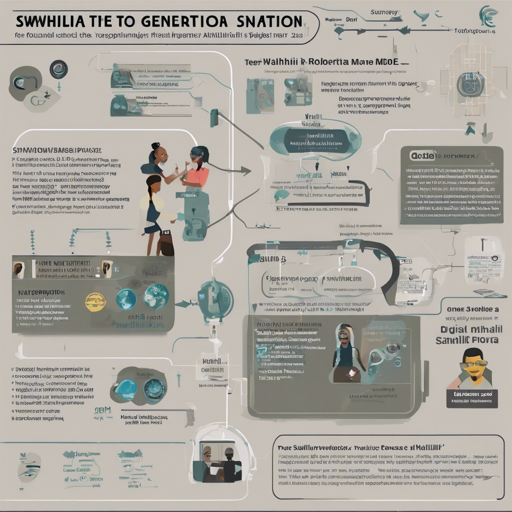Welcome to the world of natural language processing, where language barriers crumble under the might of advanced AI models. In this post, we will explore how to use the xlm-roberta-base-finetuned-swahili model – a powerful application fine-tuned specifically for the Swahili language.
What is xlm-roberta-base-finetuned-swahili?
The xlm-roberta-base-finetuned-swahili model is essentially a specialized version of the XLM-RoBERTa model, fine-tuned on Swahili texts. Think of it as a student who has meticulously prepared for a specific exam. This model offers enhanced performance on tasks such as text classification and named entity recognition when dealing with Swahili texts.
Intended Uses and Limitations
- Text classification
- Named entity recognition
However, it’s important to note its limitations. This model draws its knowledge from a specific training dataset of entity-annotated news articles. Thus, it might not perform equally well in all domains, especially those outside of its training samples.
How to Use the xlm-roberta-base-finetuned-swahili Model
Using this model is straightforward! You can harness the power of the Transformers library by following these simple steps.
Step 1: Install the Transformers Library
If you haven’t already, make sure to install the Transformers library. You can do this using pip:
pip install transformersStep 2: Import the Necessary Libraries
Next, you need to import the relevant module in your Python environment.
from transformers import pipelineStep 3: Initialize the Model
Now, you can initialize the pipeline for masked token prediction as follows:
unmasker = pipeline('fill-mask', model='Davlan/xlm-roberta-base-finetuned-swahili')Step 4: Use the Model to Predict Masked Tokens
Let’s use the model to predict a missing token in a sentence:
unmasker("Jumatatu, Bwana Kagame alielezea shirika la France24 huko kwamba hakuna uhalifu ulitendwa") Calling this method will return various predictions for the masked word along with their associated scores. The analogy for this would be asking a group of experts for their insights on who might have authored an unnamed article, and each expert gives you their best guess along with their confidence level.
Troubleshooting
If you encounter issues while running the model, consider the following troubleshooting tips:
- Ensure that the Transformers library is installed correctly.
- Check for typos in the model name when initializing the pipeline.
- Make sure you are using a compatible Python version.
For more insights, updates, or to collaborate on AI development projects, stay connected with fxis.ai.
Evaluation Results
The model was evaluated on the MasakhaNER dataset and performed exceptionally well. The results showed that:
- XLM-R F1: 87.55
- Swahili RoBERTa F1: 89.46
Final Thoughts
At fxis.ai, we believe that such advancements are crucial for the future of AI, as they enable more comprehensive and effective solutions. Our team is continually exploring new methodologies to push the envelope in artificial intelligence, ensuring that our clients benefit from the latest technological innovations.
Conclusion
Using the xlm-roberta-base-finetuned-swahili model empowers you to tap into the rich nuances of the Swahili language, enabling more effective communication and data analysis.

